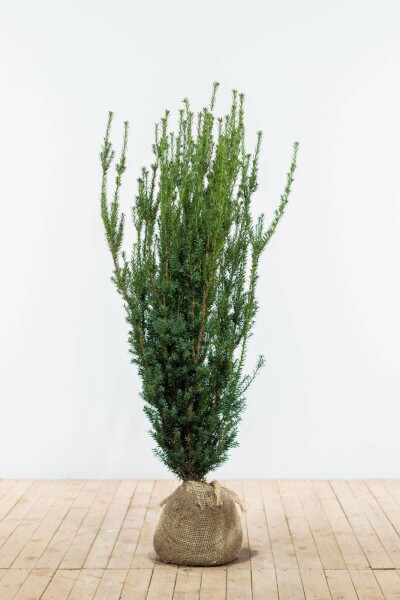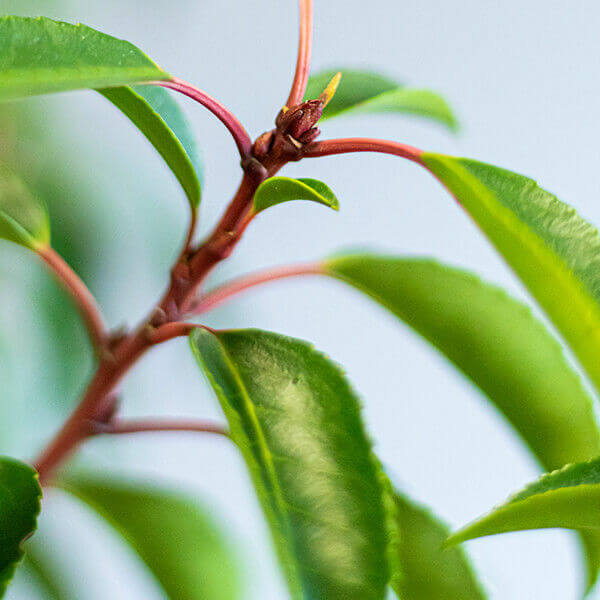Best Hedging Plants For Garden Privacy
Best Hedging Plants For Garden Privacy
Blog Article
Hedge Plants For Partitioning Gardens
Enhance your garden's appeal with lush hedge varieties such as Yew (Taxus), Thuja, Laurel, Photinia, and Bamboo, commemorated for their structural stability and environmental benefits.
Yew and Thuja supply evergreen coverage and winter season resilience, while Laurel uses fast growth and broad, fragrant leaves.
Photinia includes seasonal appeal with its vibrant red foliage, and Bamboo lends a low-maintenance, tranquil ambiance.
These hedges enhance air quality, decrease sound, and create tranquil, personal areas.
Correct planting, spacing, and maintenance make sure energetic growth and ecological harmony.
Check out how these lush varieties can elevate your garden's charm and wellness.
Secret Takeaways
Transform Your Garden With Lush Hedge Varieties
- Select Yew for its thick, evergreen development and unrivaled longevity.
- Select Laurel for its quick development and broad leaves, ensuring quick privacy.
- Pick Photinia for its vibrant seasonal foliage, which turns a striking dark red.
- Make use of Bamboo for a low-maintenance, winter-hardy hedge with aesthetic appeal.
- Space plants 2-3 per meter and prune routinely for optimum development and health.
Popular Hedge Plants
When transforming a garden with rich hedge ranges, it's vital to think about popular hedge plants such as Yew, Thuja, Laurel, and Photinia due to their special characteristics and benefits.
Yew (Taxus) is highly esteemed for its longevity and dense, green growth, making it a prime choice for sustaining landscapes.
Thuja is kept in mind for its evergreen foliage and robust winter season resilience.
Photinia includes seasonal vibrancy with red leaves that darken over time, producing dynamic visual appeal.
Laurel uses rapid growth and fragrant, broad leaves, ideal for fast personal privacy.
In Addition, Bamboo is an exceptional option for ambiance, offering a low-maintenance, winter-hardy option that boosts the garden's visual with its sophisticated, swaying walking sticks.
These selections cater to a range of horticultural needs and choices.
Benefits of Garden Hedges
Garden hedges use a multitude of advantages, making them a valuable addition to any landscape. These natural barriers are affordable to carry out and offer substantial wind security, enhancing air blood circulation and adding to noise reduction. The thick foliage of hedges like Thuja and Beech ensures personal privacy by obstructing presence, producing a secluded and tranquil environment.
Hedges likewise play a crucial function in microclimate policy, offering a steady environment that promotes plant growth and decreases temperature fluctuations. Their complex leaf structures filter toxins, improving air quality and adding to a much healthier garden community.
Furthermore, hedges stand out in sound reduction, soaking up and deflecting sound waves to lower ambient noise levels. This double performance of supplying both visual and acoustic privacy enhances the total tranquility and visual appeal of any garden.
Planting and Upkeep Tips
For an effective hedge, precise preparation of the planting location is vital. Ensure the soil has correct pH and drainage to support strong root development.
Space the plants appropriately for the selected types. Water the hedge regularly during its initial growth phase, adjusting as needed with seasonal changes.
Implement a systematic pest control and disease prevention strategy, using chemical or organic treatments when needed. Frequently check for aphids, mites, and fungal infections.
Apply mulch to retain wetness and reduce weeds. Seasonal pruning promotes dense growth and air circulation, essential for plant health.
Following these guidelines will assist you cultivate a lively, properly maintained hedge that boosts the charm of your garden.
Spacing and Trimming Guidelines
Spacing and Cutting Standards
Appropriate spacing and trimming are crucial for cultivating healthy, aesthetically appealing hedges. Adequate spacing makes sure each plant receives enough nutrients, light, and airflow.
Follow these guidelines for optimum hedge maintenance:
- Spacing: Position hedge plants 2-3 plants per meter to encourage robust growth.
- Pruning Techniques: Regular pruning is important for maintaining desired hedge height and shape. Trim new development in summer season and cut down older wood throughout winter season.
- Seasonal Care: Change cutting schedules and approaches according to seasonal requirements to guarantee plant health.
- Hedge Height: Regularly monitor and cut to keep the preferred hedge height and achieve uniform aesthetics.
Sticking to these steps will ensure your hedge grows, boosting both the appeal and performance of your garden.
Choosing the Right Hedge
Picking the Right Hedge
Picking the suitable hedge involves examining elements such as fully grown height, foliage density, and ecological resilience. Effective hedge plant choice requires comprehending each species' development attributes and site-specific flexibility.
For example, Yew (Taxus) uses outstanding longevity and thick growth, while Thuja is significant for its winter strength. Furthermore, thinking about maintenance requirements is crucial; fast-growing types like Laurel or Privet need regular cutting, whereas low-maintenance choices like Bamboo or Ivy may be more suitable for those seeking minimal upkeep.
Ecological elements such as soil type, light availability, and moisture conditions need to also assist the selection procedure. This mindful method makes sure the chosen hedges will prosper, supplying both practical and visual benefits to the garden landscape.
Delivery and Planting Advice
To ensure your hedge plants prosper, they should be delivered by specialized couriers and planted without delay upon arrival.
Follow these important actions for effective planting:
- Soil Preparation: Improve the soil with raw material to enhance drain and nutrient material.
- Planting Depth: Create a trench twice the width and equivalent to the depth of the root ball.
- Watering Strategies: Water thoroughly after planting, keeping the soil consistently damp but not saturated.
- Mulching: Use a layer of mulch to maintain wetness and suppress weeds.
Customer Support and Service
Provided the important role of timely assistance in horticultural pursuits, our client assistance group is readily available 6 days a week through telephone, e-mail, and social networks to offer expert advice and swiftly deal with any concerns. Their commitment to fast reaction times makes sure consumer satisfaction by dealing with inquiries associated with plant health, ideal planting techniques, and maintenance schedules.

Reaction Time
----------------------
Telephone
Six days a week
Within 24 hr
This thorough support system, strengthened by an outstanding 9.3/ 10 consumer ranking, highlights our commitment to enhancing the gardening experience for each client.
Frequently Asked Questions
For How Long Does It Take for Hedge Plants to Establish?
Hedge plants normally need one to 3 years to end up being completely developed, with the precise period differing by species and growing conditions.
Efficient care during this crucial period is important for robust growth. Consistent watering, vigilant weed control, and appropriate fertilizer application are pivotal in promoting strong root development.
For instance, fast-growing types like Laurel might establish quicker, while slower-growing varieties such as Yew might take longer. Diligent upkeep speeds up the facility process, resulting in thick and healthy hedges.
What Are the Finest Hedge Plants for Privacy?
The question of the very best hedge plants for personal privacy includes assessing evergreen and deciduous choices.
Evergreen hedges like Thuja, Laurel, and Cypress provide year-round protection, ensuring constant personal privacy.
In contrast, deciduous hedges such as Beech offer seasonal personal privacy, shedding leaves in cooler months.
Key maintenance pointers for personal privacy hedges include routine trimming, fertilizing in spring, and proper spacing-- typically 2 to 3 plants per meter.
Furthermore, consistent watering and diligent weed elimination are essential for promoting healthy, thick development.
Can Hedge Plants Attract Wildlife to My Garden?
Yes, hedge plants can bring in wildlife to your garden by offering essential advantages like shelter, food, and nesting sites, therefore improving regional biodiversity. Yew, holly, and laurel are outstanding for bring in birds, while ivy supports a variety of pests.
However, it's crucial to note that there are some downsides, such as increased upkeep to manage pests and regular upkeep. Thoroughly selecting and preserving hedge ranges can help stabilize these drawbacks and benefits, eventually fostering a sustainable and vibrant community in your garden.
Exist Any Blooming Hedge Plants Available?
Yes, there are flowering hedge plants offered that can improve the appeal of your garden.
For example, Elaeagnus, also understood as Olive Willow, produces get more info aromatic white flowers in the fall, adding a touch of beauty.
Photinia, another popular option, showcases lively red leaves that mature into a rich green, developing a vibrant visual effect throughout the seasons.
To ensure these plants prosper, it's necessary to practice proper pruning techniques and seasonal maintenance, such as cutting brand-new growth in the summer and cutting back in the winter season.
These procedures will assist keep the health and visual appeal of your blooming hedges.
How Do I Prevent Pests in My Hedge Plants?
To prevent pests in hedge plants, employ natural insect control techniques and preserve appropriate hedge care. Introduce useful pests like ladybugs, which victimize damaging bugs, to develop a well balanced environment.
Frequently check your hedges for indications of problem and promptly get rid of any afflicted parts to avoid the spread. Ensure the health of your hedges by applying balanced fertilizers and providing appropriate water.
Make use of mulching to maintain soil wetness and appropriate spacing to decrease plant stress and promote robust growth. These practices jointly assist in decreasing bug problems and preserving a healthy hedge.
Conclusion
In essence, selecting the right hedge ranges such as Yew, Thuja, and Laurel can change any garden into a relaxing haven. These plants provide year-round greenery, boost visual appeal, and deal practical advantages like sound reduction and wind protection.
Proper planting strategies, accurate spacing, consistent watering, and seasonal cutting are crucial for ideal growth.
Trusted shipment services and expert consumer assistance guarantee a seamless experience from purchase to planting, making it easier than ever to elevate your outside space.
Garden hedges offer a wide variety of benefits, making them an important addition to any landscape. These natural barriers are affordable to implement and offer significant wind defense, improving air blood circulation and contributing to noise decrease. The thick foliage of hedges like Thuja and Beech ensures personal privacy by blocking visibility, developing a peaceful and remote environment.

Pruning Techniques: Regular pruning is essential for maintaining wanted hedge height and shape. Trim new development in summertime and cut back older wood during winter season.
Report this page